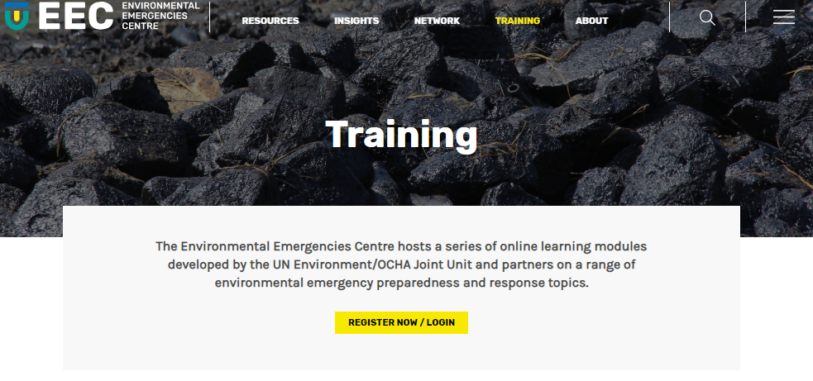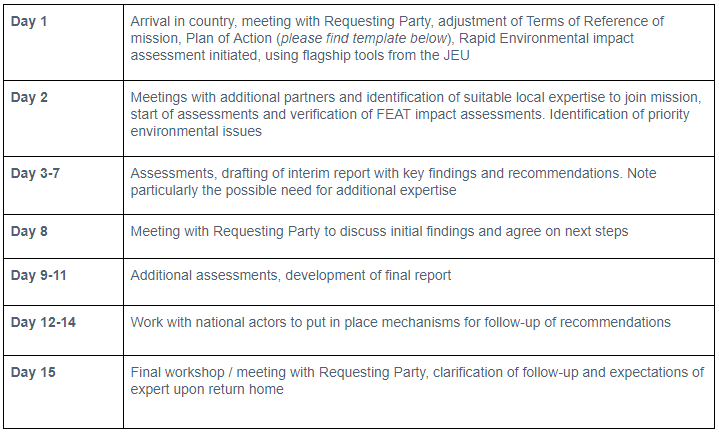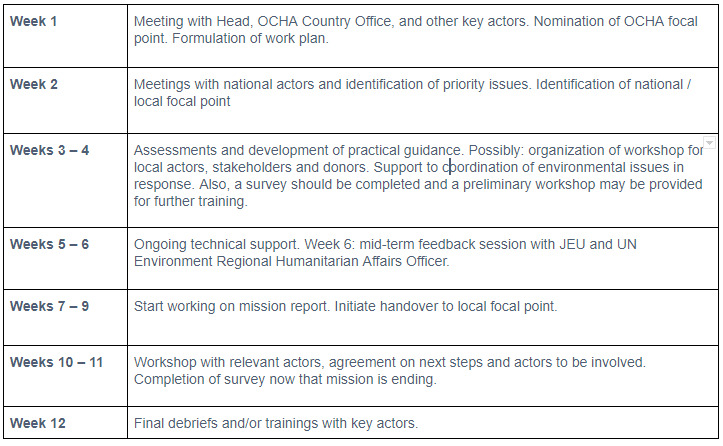Mission pre-requisites and deliverables
Before the mission – Online training
Recommended modules
Experts interested in deploying as Environmental Experts for Emergencies or Environmental Field Advisors are strongly encouraged to complete the following modules before being deployed.
Additional training
In addition to these courses recommended for all, experts are also invited to complete the following two courses developed and provided by the UN Environment/OCHA Joint Unit on the Environmental Emergencies Centre Learning Platform.
Specialized training
Some missions require further specific trainings. Depending on the context, experts can be invited to complete the following modules developed by other partners of the JEU.

During and after mission
Reporting
Regular updates and reporting on any acute environmental issues are expected from deployed experts.
Acute Environmental Issue on-site : Reporting on any acute environmental issue is to be done through the On-Site Operations Coordination Centre (OSOCC) and/or with the Requesting Party through the Team Leader.
Regular updates : An update is expected immediately upon arrival in country. Regular short updates, either in writing (1-2 paragraphs on issues encountered and activities planned for the upcoming days), or by call, are to be sent to the Joint Unit’s response focal point and the deploying environmental emergencies response provider every two to three days.
The frequency and means for regular reporting is agreed with the team and remote support partners, once all members have arrived in the country, depending on communication and other missions’ constraints. A Plan of Action is expected as soon as possible (template below).
Key information on environmental risks, including results of the rapid environmental assessments using flagship JEU tools (eg. the Flash Environmental Assessment Tool – FEAT) are to be reported in the Virtual OSOCC (VOSOCC) under “Environmental risks”.
Final report
In the earliest days of reporting, an easy-to-read Executive Summary should be submitted. Similarly, the Executive Summary should provide a situational overview of the disaster context, response partners involved, assessment missions that have taken place and any preliminary findings. This early version will aid in the later development of the full mission report.
| UNDAC reporting practices |
UN Environment / OCHA Joint Unit reporting practices |
| When deployed on an UNDAC mission, the Environmental Expert is expected to substantially contribute to the UNDAC mission report, with the findings of the environmental assessment provided as an annex and using the standard JEU report template outline, with adjustments agreed upon with the team leader. |
For standalone environmental emergency missions, a final mission report is to be produced using the standard JEU reporting template (that you can download below). Mission reports offer a concise overview of mission activities, and should be written with a focus on the mission objective. |
Please note: The expert should produce one main report using the Joint Unit’s template, which will be sent in Word format. The expert may be requested to produce reports for the deploying organization in other formats, as well as inputs to the overall disaster assessment report.









